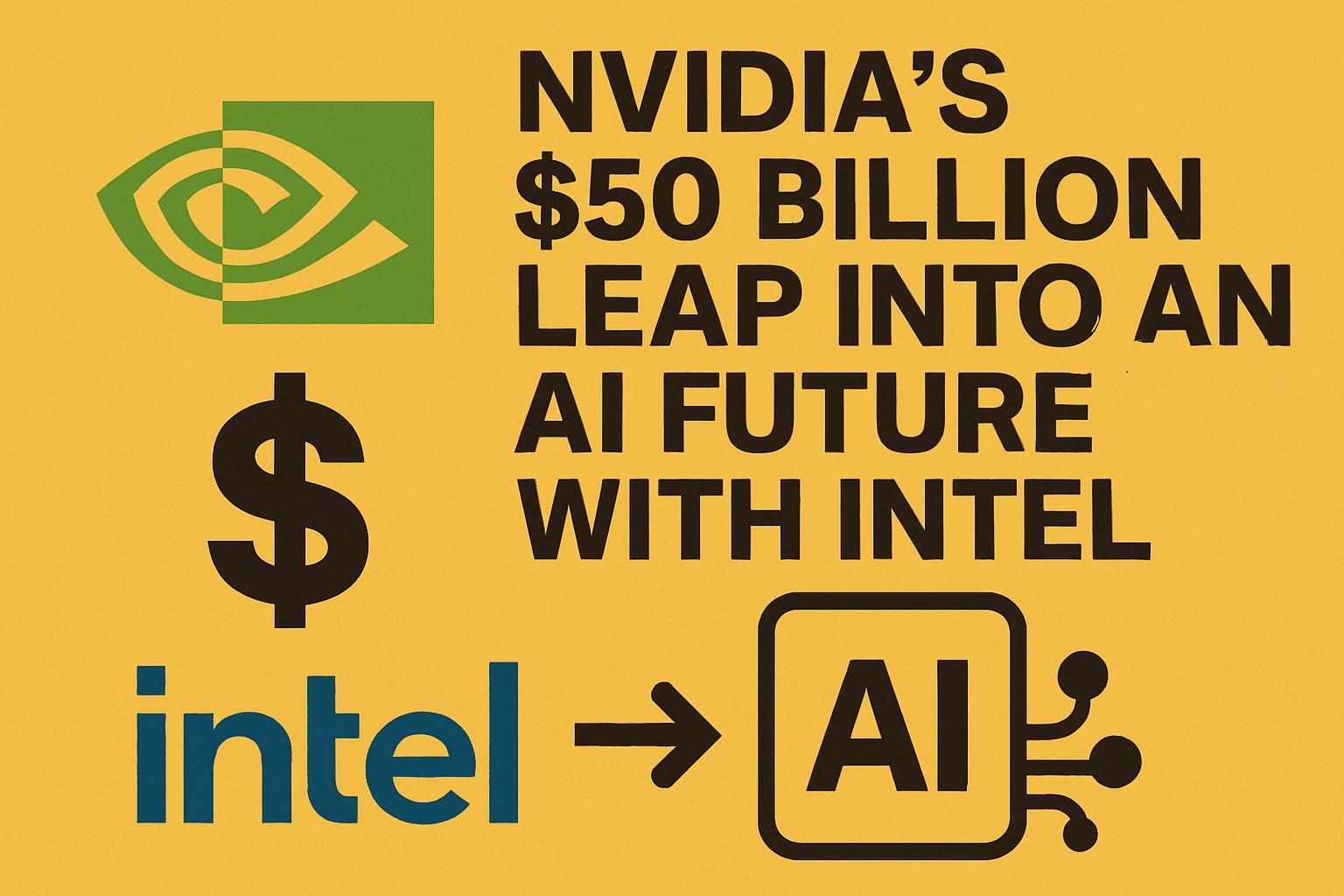Nvidia has taken a bold step into reshaping the semiconductor landscape by announcing a substantial $50 billion investment in its traditional competitor, Intel. This strategic move places Nvidia among Intel’s key stakeholders, boasting roughly 4% ownership. Following closely after the U.S. government’s entry into Intel’s shares, this investment underscores a deliberate strategy orchestrated by the White House to overhaul and fortify America’s chip industry.
Nvidia’s and Intel’s stocks responded favorably to the announcement—Intel saw its shares soar by 26%, while Nvidia enjoyed a modest 2% increase. This market reaction clearly indicates investors’ optimism about the potential synergy this partnership promises.
Strategic Alignment Amidst Political Challenges
The backdrop to this alliance reflects a more complex narrative involving political maneuvering. Intel’s appointment of Lip-Bu Tan as CEO earlier this year stirred controversy, drawing criticism from various political figures due to concerns about his ties with China—posing a perceived national security threat. However, the White House’s intervention, resulting in a compromise where the U.S. government acquired a 10% stake in Intel, cleared the pathway for Nvidia’s landmark investment.
Excluding Foundry Collaboration: A Cloud over TSMC
While Nvidia and Intel plan to jointly develop multiple generations of PC and data center chips, they have excluded Intel’s foundry services from the collaboration. This omission serves as a potential threat to Taiwan’s TSMC, currently a major supplier for Nvidia’s AI processors.
Should future conditions tilt Nvidia’s favor more towards Intel, it could reshape existing supply dynamics, exerting long-term pressures on TSMC’s operations.
Aiming at AMD and Broadcom: New Horizons for AI Development
The strategic partnership is set to produce customized CPUs by Intel that integrate with Nvidia’s graphics processors, designed as interconnected AI server components. These innovations aim to deliver high-speed chip connectivity, critical for AI training and inference.
Moreover, Nvidia’s promise to enhance Intel’s PC processors with advanced graphics chips directly challenges AMD, a vibrant competitor in the PC market. Furthermore, Broadcom, though a leader in chip interconnection with notable partnerships like Google, remains reserved on commenting about this strategic alliance.
Navigating Political Waters and the China Conundrum
This venture doesn’t directly resolve Nvidia’s market hurdles in China, impeded by tightening U.S. export restrictions on chips such as Nvidia’s H20. However, it facilitates political goodwill at home, potentially easing some regulatory restrictions under the Trump-led administration.
Nvidia’s active engagement in the White House political sphere, including CEO Jensen Huang’s diplomatic visit to the UK alongside the U.S. President, highlights their strategic alignment with American policy objectives. According to senior analyst Matt Britzman, this could eventually relax export restrictions on advanced chips to China.
Empowered by Public and Private Support
This latest infusion of capital is Intel’s third significant financial boost recently—it follows a $2 billion investment by Japan’s SoftBank and a $5.7 billion contribution from the U.S. government, strengthening Intel’s financial foundation.
With promises of a lean strategy from CEO Lip-Bu Tan, he emphasizes planned capacity expansions only when market demands are confirmed, ensuring efficient use of resources.
Uncertain Timelines but Definite Transformations in AI
While the timeline for their joint products remains unspecified, both firms commit to their existing product roadmaps. This collaboration represents a fresh model of commercial product exchange and technological integration without involving patent arrangements, setting new precedents in industry cooperation.
Nvidia’s foray into the PC and data center CPU market, coupled with Intel’s AI server advancements, redefines competition in the semiconductor arena. This partnership is poised to be the linchpin in the battle for dominance against rivals like AMD, Broadcom, and TSMC in the AI chip market.

![[News] Bitcoin at a Turning Point? 10x Research Signals a Bullish Macro Shift Ahead](https://cryptoexplores.com/wp-content/uploads/2025/06/new20250616.jpg)
![[News] Binance Lists $HOME, the Gas-Free, Bridge-Free All-in-One DeFi App](https://cryptoexplores.com/wp-content/uploads/2025/06/news20250617.jpg)